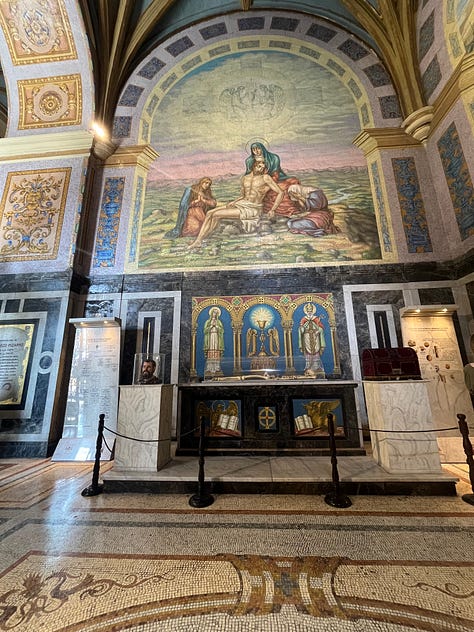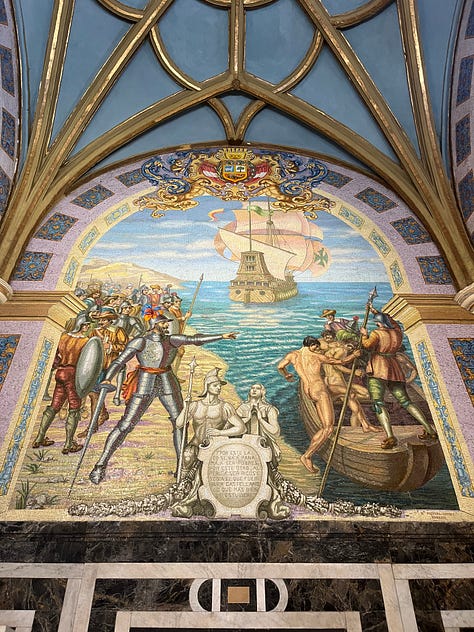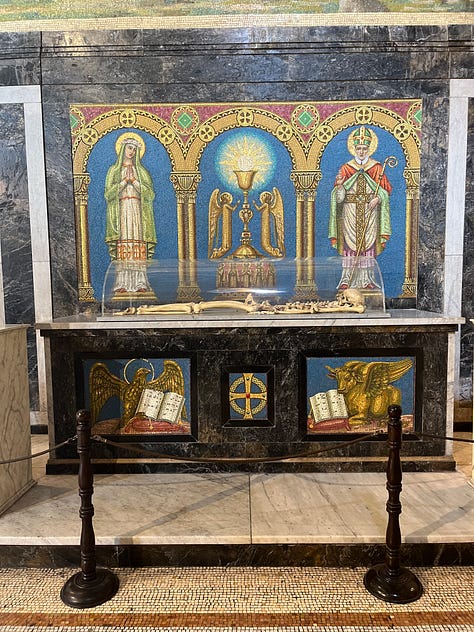We have been talking a lot about signs and messaging and the power of words lately. At the Lima Cathedral, upon being handed a tour brochure, I was struck by the guide’s introduction to the Cathedral. She said something like “this Cathedral commemorates Francisco Pizarro, the founder of Lima and this Cathedral,” and she spoke of him with a reverence that seemed to be positioning him as a national hero of some sort. Her tone indicated that the Cathedral was honouring a national founder and hero. We are of course still learning about the complexity of Indigeneity in Peru, but I was definitely really surprised by that narrative, and it made me reflect more on possible ongoing and more modern narratives and perspectives about the Spanish conquest of the Inca Empire. I feel like the spread of Catholicism, which persists amongst the population today, and Pizarro’s connection to it through his founding of the Cathedral (then a church) and his involvement in the conversion to Catholicism plays a role in that honourification. That’s at least something I am thinking about as playing a part in that narrative. I’ve since learned (literally as I write this) that the Cathedral was built on top of an Inca shrine, which is such a clear example of erasure and colonial domination.
Now onto the art. I have been to many grand churches and religious spaces in my time. I love the stained glass windows, and I always quietly hope that someone will start playing the organ. I am also always interested in which saints the church has been affiliated with, and which scenes they pay homage to, as there are always the standard bible scenes in those spaces, but also usually something more unique to the congregation and its patron. However, what struck me was the entire altar room dedicated to, you guessed it, Francisco Pizarro. The room had a surprise at every turn, from paintings depicting his landing in Peru, to the altar and shrine dedicated at one end, to the recreation of his skeleton with a forensic analysis of his post- and ante-mortem wounds. I have never seen or expected to see something like the latter in a Cathedral. The art and architecture were of course beautiful (pictures below), but I was contemplating the messaging of the grandiose architecture of the Church, as this course has encouraged us to do; is it sending a clear message of religious prestige, with some colonial domination sprinkled on top? How do Peruvians interpret Pizarro’s impact and actions, and what contributes to creating those varying perspectives?







"How do Peruvians interpret Pizarro’s impact and actions, and what contributes to creating those varying perspectives?" It is interesting to compare what happens inside and outside the Cathedral. While we were waiting for everyone to leave, a saleswoman told us that they were poor because of all the gold Francisco Pizarro stole and that she hoped he would return it to her. The consensus is not absolute about the past.
Hi Caroline,
Thank you for your wonderful musings on the Lima Cathedral's veneration of Francisco Pizarro! I didn't enter the cathedral, so it's very interesting and jarring to learn what is inside. The way you described the entire altar room dedicated to Pizarro feels surreal. How is there a forensic analysis of his post- and ante-mortem wounds??? Or actually, WHY is that there?? The whole thing seems beyond insensitive to us, but it clearly wasn't to the tour guide. Since the Plaza Mayor is where power is centralized and concentrated, the decision to include a gigantic cathedral there says something about who and what ways of knowing have power here.
Take care,
Cissy